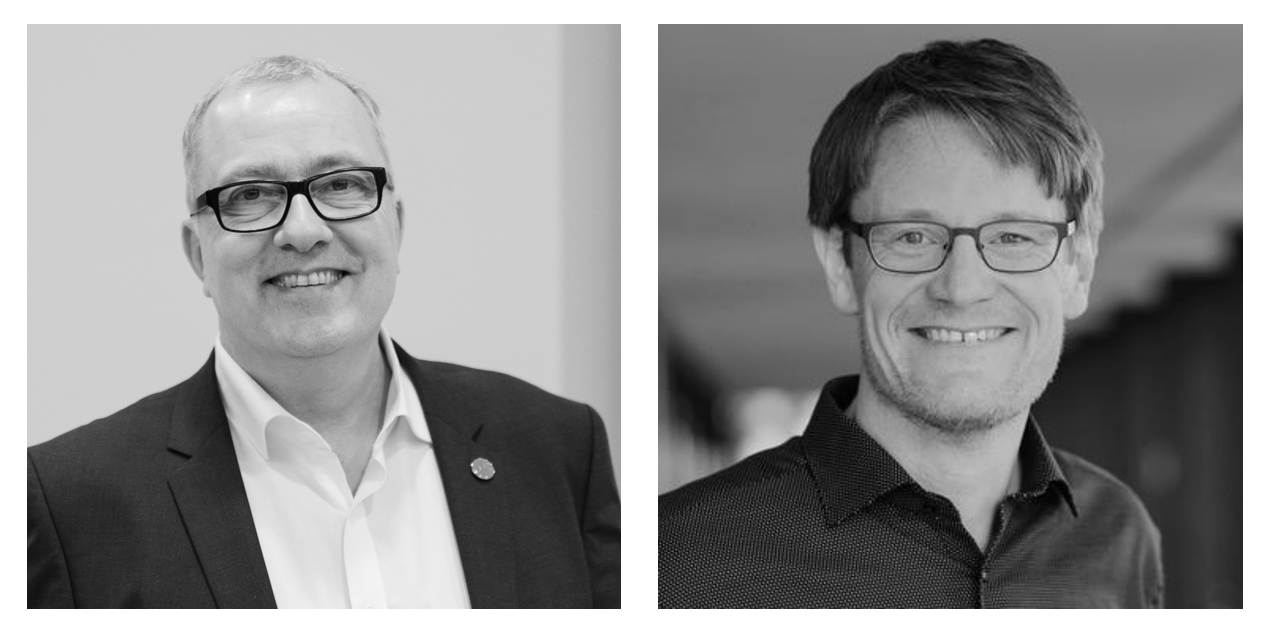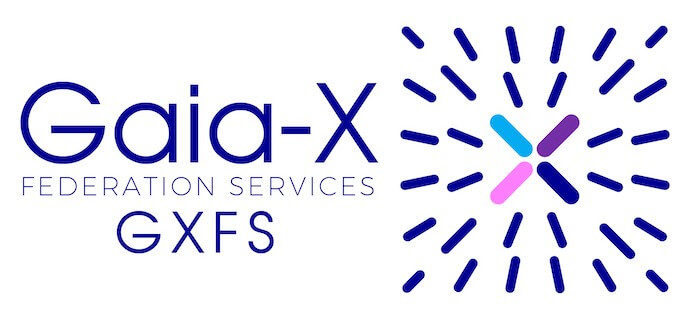
An interview with Emma Wehrwein, Project Lead GXFS

The momentum for Gaia-X is growing steadily. More and more companies and teams across Europe are joining the initiative. The first pilot projects are underway. But the complexity also gives rise to a lot of questions. Insider Emma Wehrwein from eco – Association of the Internet Industry answers some frequently asked questions in an interview.
Emma, you are the project manager for the Gaia-X Federation Services as well as a project manager for digital business models at the eco Association. For the non-techies: What is Gaia-X exactly?
Gaia-X is an initiative launched in Europe: Hundreds of companies and organisations, some funded by EU member states and a growing number funded by the EU institutions, are building a federated next-generation data infrastructure for Europe. Gaia-X connects isolated data sources in organisations and competing cloud services from different providers in an ecosystem. This enables companies, organisations, authorities and also citizens to exchange data securely and, above all, sovereignly. This means they retain full control over their data and no longer risk becoming technically dependent on individual platform providers. For this ecosystem, Gaia-X develops rules, standards, blueprints and technology for data sovereignty, interoperability and freedom of choice in digital services.
What are the Gaia-X Federation Services (GXFS)?
The Gaia-X Federation Services, or GXFS for short, provide the technical foundation for the European data ecosystem. The GXFS are a software framework under an open-source licence, i.e. a collection of open-source programme modules. They can be used to build and manage cloud-based data ecosystems – we call them federations.
What are federations?
Gaia-X follows –typical for Europe – a federal approach. This means that there will be no centralised European cloud and data platform for all. The technical requirements in the EU countries and economic sectors are too different for this. Moreover, no one could build a new hyperscaler on a greenfield site anymore. Instead, user companies and IT service providers design their own data ecosystems according to their needs along industries, value chains, research topics or geographical spaces. To this end, they organise themselves into self-governing Gaia-X federations. They determine and monitor the rules and technical specifications for their members. The GXFS provide the technology building blocks and ensure that different federations function according to the same values and that the data ecosystems can later cooperate technically. In doing so, we’re not trying to reinvent the wheel but are using existing techniques, solutions and services wherever possible.
How are Gaia-X and GXFS related?
The Federation Services are part of Gaia-X. Their development was commissioned and coordinated by the German project office GXFS-DE under the direction of eco – Association of the Internet Industry and on behalf of the German Federal Ministry for Economic Affairs and Climate Action (BMWK). The GXFS were created in close cooperation with the Gaia-X Association for Data and Cloud (AISBL), the central association of the initiative based in Brussels, and other initiatives such as the Sovereign Cloud Stack.
How are Gaia-X and the national Gaia-X hubs connected?
In addition to the Gaia-X AISBL in Brussels, IT providers and user companies and organisations from industry, science and public administration form the second pillar of the project. They collaborate in national hubs at the member-state level. In this way, the special requirements of the different economies can be adequately represented. The hubs are not part of the AISBL, but they support the initiative as think tanks, multipliers and national contact points.
The third large group is the open-source community for the software components of the initiative. The community comprises the entire global Gaia-X network. Users and providers collaborate on the basis of data space events, hackathons and onboarding webinars, community newsflashes and summits. Everyone is welcome to get involved in the Gaia-X community and contribute to building a federated data infrastructure.
At what point should I join or form a federation as a company?
It depends on how big your project is going to be: You don’t need a federation if you only share data with a handful of partners as part of your business model or value chain. But if you share a data space with dozens, hundreds or even more partners, especially with frequently changing players, they need their own organisation. From this level of complexity onwards, it makes sense for the participants in a data space to come together in their own federation. A good example is the flagship project Catena-X, which aims to digitalise supply chains in the automotive industry. Here, the federation develops common requirements, lays down rules and develops technical solutions, such as standard interfaces for data exchange.
How can my company join Gaia-X?
This depends on your goals and your expectations of a cooperation. If you want to get involved politically and represent the interests of your company or your sector in the Gaia-X process, then membership in the central association, the AISBL, is recommended. If, on the other hand, you are pursuing a new business model, then I recommend that you contact the national hub in your home country. In the working groups, members present and discuss use cases and ideas for data-driven business models. This is the ideal platform for pioneers. It doesn’t even incur any membership fees. Technical exchange and inspiration are also offered by the numerous hackathon events. In addition, our GXFS-DE project office will strengthen community work from 2023 and offer further events for interested companies.
How do I integrate the Federation Services and Gaia-X into my business?
First determine the concrete needs for your project! What data do you need for your business or project idea? How and with whom do you have to exchange data for this? How and with what do you want to process the data? The answers to these questions will tell you which Federation Services you need. In the next step, you develop an implementation concept and then use the GXFS-OSS framework to develop the infrastructure for your data ecosystem. Those who are not yet ready can still put out their feelers, get involved in working groups at their Gaia-X Hub, or take part in one of the numerous hackathons or other events in the Gaia-X cosmos. However, it is clear that Gaia-X will not be available as ready-to-use software.
What role do the funding projects play in Gaia-X?
Europe is too diverse for anyone to dictate the data infrastructure for our entire continent all by themselves. That is why Gaia-X is developing the requirements for future data ecosystems from the ground up, together with the IT industry and user companies in more than a dozen member states. So far, data-based business ideas and digitalised value chains are still the exceptions. That is why we need reference implementations that also apply and illustrate the value creation potentials in an exemplary manner.
This is where the Gaia-X flagship or funding projects play a key role. Until 2024, the German Federal Ministry for Economic Affairs and Climate Action (BMWK) alone is supporting eleven consortia for digital flagship projects with 122 million Euro. They are to implement business ideas and improve existing processes and procedures in companies and public authorities with digital technology.
The funding projects are the first to use the new federation services in practice. They are using the OSS framework to build their own federations. Their experiences also provide important information for improving and expanding the GXFS. This approach is really working. The projects are systematically familiarising themselves with the GXFS and want to implement them in their projects. This is also shown by the results of our study, which we presented at GXFS Connect in October 2022. A delta study mapping further success in implementation will follow in summer 2023.
What is the Eclipse Dataspace Connector?
The Eclipse Dataspace Connector (EDC – soon to be known as Eclipse Dataspace Components) is an open-source framework for the sovereign exchange of data and the construction of data spaces. Basic principles for the EDC were developed by the Fraunhofer Institute for Software and Systems Engineering ISST in Dortmund as part of the International Data Spaces Association (IDSA) initiative. Similar to Gaia-X, this initiative develops foundations for cross-domain data spaces. Twelve institutes of the Fraunhofer-Gesellschaft have designed an architecture model for IDS for data spaces in which partners exchange data securely and confidently according to common standards. The EDC provides the technology for this blueprint and is now being further developed for productive use via an open community approach together with flagship projects such as Catena-X.
How are the GXFS and the Eclipse Dataspace Connector (EDC) related?
The Eclipse Dataspace Connector (EDC) and the Federation Services (GXFS) are not technical competitors but build on each other: The EDC is a solution for setting up data spaces. It is used in Gaia-X flagship projects such as Catena-X. The GXFS are a framework for building and managing federations in which members organise themselves. In general, we see data spaces as the basis for building digital value-creation processes that are developed in the federations. Thus, there are overlaps and synergies.
What happens when all the components of GXFS and the open-source code are finished?
Currently, the code is publicly available for most of the funding federation services. By the end of the first quarter of 2023, all work packages on the Eclipse Foundation platform will be quality-checked and optimised for publication. In addition, we at the GXFS-DE project office want to focus on the developer community from 2023 onwards and support them with events such as hackathons and deep dives and provide background knowledge.
Why is the GXFS project being handed over to Eclipse Foundation Europe?
As with any open source project, the programme code for the GXFS will never be finally finished but evolves with the needs of the user companies and organisations. Therefore, we need a platform to organise collaboration on the GXFS code. Here, too, Gaia-X relies on the most successful processes and structures in the market. The Eclipse Foundation has specialised in precisely this task: Coordinating open source development and ensuring standards in development cooperation. For this purpose, the foundation provides its own platform where projects publish their source code and edit it with the worldwide developer community.
Is the foundation independent?
The Eclipse Foundation is a non-profit organisation based in Brussels. The origins of the foundation lie in the private sector. The first project was initiated by IBM in 2001, supported by a consortium of leading software providers. Since 2004, the Eclipse platform has been a true open-source project led by the Eclipse Foundation. In 2021, the Foundation moved its headquarters from North America to Brussels, Belgium, where it is registered as a non-profit association.
The Eclipse Foundation is the right partner for GXFS’ open source strategy: Their platform and procedures for cooperation with the developer community have proven themselves over twenty years. Their foundation’s goal is precisely to create a community that is independent of providers, open and transparent, which aligns perfectly with Gaia-X’s mission.
Emma, thank you for the interview.
Andreas Weiss & Thomas Sprenger

Every month on LinkedIn and www.gxfs.eu
Every month from now on, we will guide you through the world of Gaia-X on LinkedIn and www.gxfs.eu. Our analyses and interviews give background and insights into how a European initiative and its collaborators want to create an ecosystem for value creation from data.
Heading this series of articles is Andreas Weiss. As Head of Digital Business Models at eco as well as Director of EuroCloud Deutschland_eco, Andreas Weiss is well connected and familiar with the Internet and cloud industry in Europe. He brings his experience to Gaia-X Federation Services (GXFS), whose project teams are responsible for the development of Gaia-X core technologies. Led by eco, the GXFS-DE project is also funded by the German Federal Ministry of Economic Affairs and Climate Action and is in close exchange with the Gaia-X Association for Data and Cloud (AISBL). Weiss is supported on this blog by Thomas Sprenger, an author and copywriter who has been writing about the digital transformation for twenty years.
